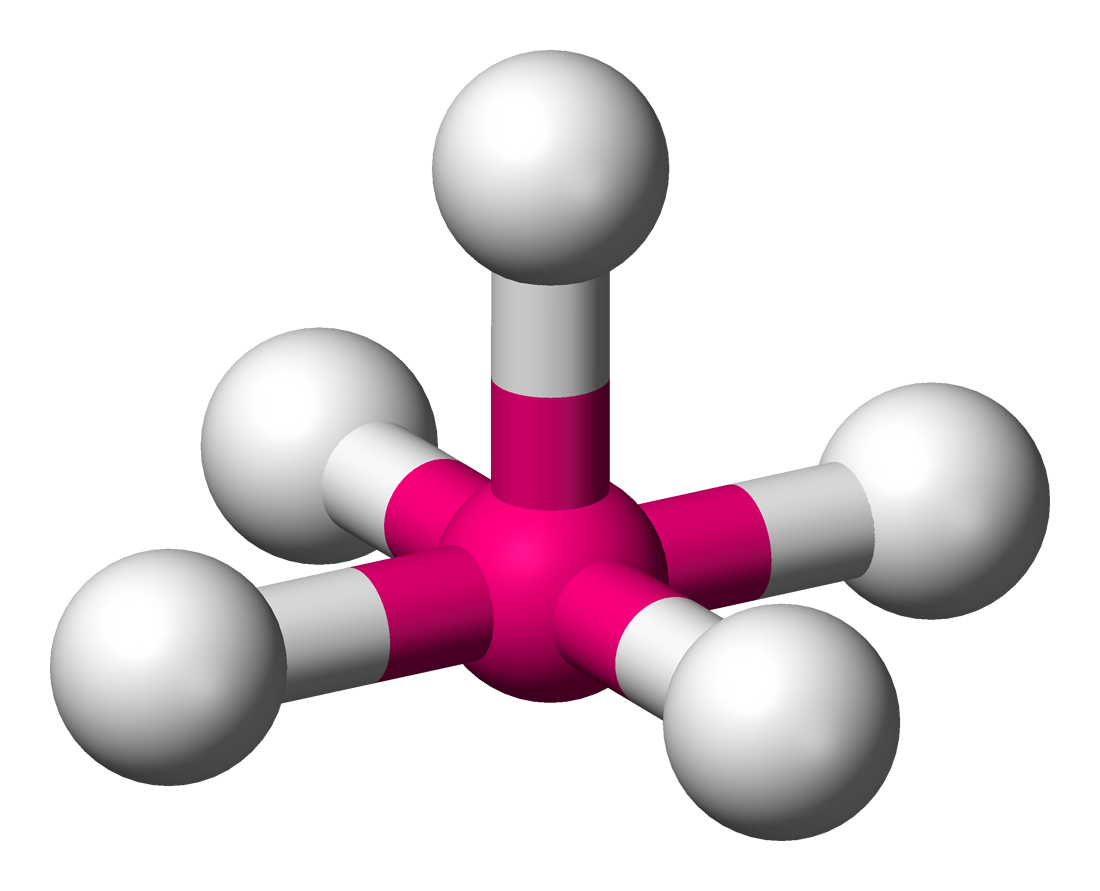Top Qs
Timeline
Chat
Perspective
Square pyramidal molecular geometry
Shape of certain five-ligand chemical complexes From Wikipedia, the free encyclopedia
Remove ads
Square pyramidal geometry describes the shape of certain chemical compounds with the formula ML5 where L is a ligand. If the ligand atoms were connected, the resulting shape would be that of a pyramid with a square base. The point group symmetry involved is of type C4v. The geometry is common for certain main group compounds that have a stereochemically-active lone pair, as described by VSEPR theory. Certain compounds crystallize in both the trigonal bipyramidal and the square pyramidal structures, notably [Ni(CN)5]3−.[1]
Remove ads

Remove ads
As a transition state in Berry pseudorotation
As a trigonal bipyramidal molecule undergoes Berry pseudorotation, it proceeds via an intermediary stage with the square pyramidal geometry. Thus even though the geometry is rarely seen as the ground state, it is accessed by a low energy distortion from a trigonal bipyramid.
Pseudorotation also occurs in square pyramidal molecules. Molecules with this geometry, as opposed to trigonal bipyramidal, exhibit heavier vibration. The mechanism used is similar to the Berry mechanism.
Remove ads
Examples
Some molecular compounds that adopt square pyramidal geometry are XeOF4,[2] and various halogen pentafluorides (XF5, where X = Cl, Br, I).[3][4] Complexes of vanadium(IV), such as vanadyl acetylacetonate, [VO(acac)2], are square pyramidal (acac = acetylacetonate, the deprotonated anion of acetylacetone (2,4-pentanedione)).
See also
References
External links
Wikiwand - on
Seamless Wikipedia browsing. On steroids.
Remove ads

